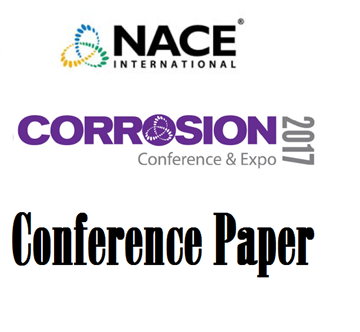Search
Products tagged with 'atmospheric corrosion'
View as
Sort by
Display
per page
51316-7100-Improving the Controlled Humidity Protection Systems by Addition of Vapor Phase Corrosion Inhibitors
Product Number:
51316-7100-SG
ISBN:
7100 2016 CP
Publication Date:
2016
$20.00
51316-7212-Formation of Galvanic Cells and Localized Corrosion under Atmospheric Conditions
Product Number:
51316-7212-SG
ISBN:
7212 2016 CP
Publication Date:
2016
$20.00
51316-7231-Effect of Surface Finishes on the Atmospheric Corrosion of Duplex Grade UNS S32205: Results of a Field Exposure Program in Dubai
Product Number:
51316-7231-SG
ISBN:
7231 2016 CP
Publication Date:
2016
$20.00
51317--9575-Intergranular Corrosion in Al-Mg 5XXX Alloys Under Atmospheric Exposures
Product Number:
51317--9575-SG
ISBN:
9575 2017 CP
Publication Date:
2017
$20.00
51317--9729-Enhanced Corrosion Management Analysis of Pipelines
Product Number:
51317--9729-SG
ISBN:
9729 2017 CP
Publication Date:
2017
$20.00
51317--9730-Quantitative Comparison of Outdoor Sites and Accelerated Test Methods Using Optical Profilometry
Product Number:
51317--9730-SG
ISBN:
9730 2017 CP
Publication Date:
2017
$20.00
51318-10968-Atmospheric Corrosion Measurements to Improve Understanding of Galvanic Corrosion of Aircraft
Product Number:
51318-10968-SG
Publication Date:
2018
$20.00
51318-11079-Assessment of Aging Mechanisms for Concrete Exposed to Outdoor and Below-Grade Environments in Spent
Product Number:
51318-11079-SG
Publication Date:
2018
$20.00
51318-11517-The Effect of Corrosion Inhibitors on Corrosion Fatigue under Complex Environmental Conditions
Product Number:
51318-11517-SG
Publication Date:
2018
$20.00
51318-11634-A condition monitor for atmospheric induced stress corrosion cracking
Product Number:
51318-11634-SG
Publication Date:
2018
$20.00
A Combined Numerical and Experimental Approach to Study the Effect of Water Layer Thickness on the Electrochemical and Corrosion Distributions in the Galvanic Coupling Between UNS A97050 and UNS S31600
Product Number:
51317--9157-SG
ISBN:
9157 2017 CP
Publication Date:
2017
$20.00
A Novel Quick Turn-Around Repair Coating For Offshore Windmills
Product Number:
51323-19481-SG
Publication Date:
2023
$20.00












